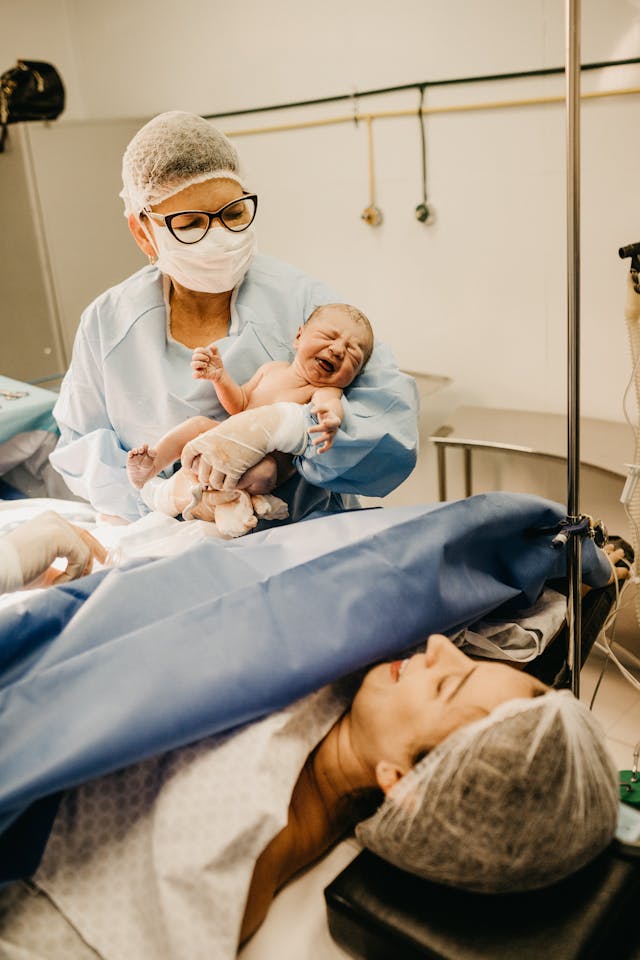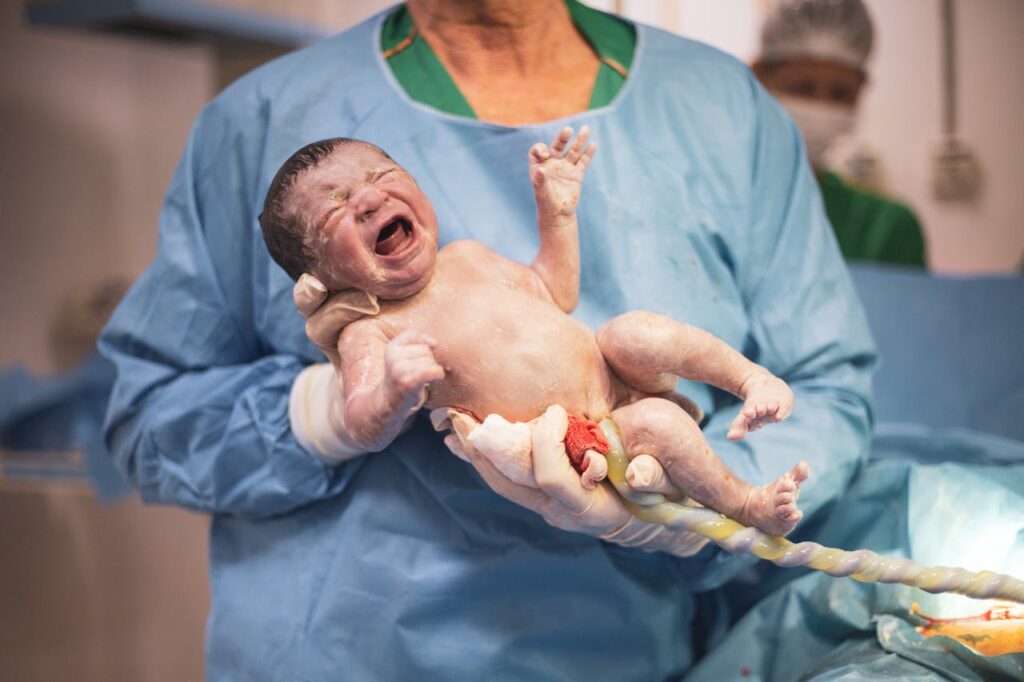Caregivers and expectant mothers, join us as we discuss cardinal movements of labor! Cardinal movements of labor refer to the sequence of unique positions and motions a baby develops while traveling from the uterus through the birth canal. They are indispensable for the correct baby delivery and prevent close to no difficulties with a mother and a newborn. Recognizing the mechanics behind labor movements becomes crucial to healthcare providers looking after a mother during this process, as it enables them to track labor progression and intervene if required to guarantee a secure delivery.
Table of Contents
Cardinal Movements of Labor: Navigation and Overview
The process of labor includes a series of physiological and mechanical actions or events that eventually result in the expulsion of the fetus from the woman’s body.
- The first phase happens when contractions are initiated, and the width of the cervix is increased.
- The second labor stage occurs, during which you have a very active pushing phase when the baby is pushed from the uterus through the birth canal.
- The last stage is the fall of the placenta, which is part of the body that supports the fetus after the baby is born.
Each stage of labor is accompanied by particular changes in the maternal body and the child standing inside, and this process is naturally guided by the three cardinal movements of labor that lay the foundation for a baby’s ready descent and rotation through the birth canal. With this knowledge, healthcare providers can monitor the labor process and adjust when required.
Initiating Labor: The Prelude Stage

Dynamic Shifts: Contractions and Cervical Dilation
The uterus contracts regularly at the establishment of the first stage of labor, and then the frequency and intensity of the contractions increase over time. These partograms facilitate dilation and thinning of the cervix, known as effacement. What follows is that the cervix begins to dilate gradually, making space for the baby to come out through the birth canal. This part may take several hours to complete, and the intensity and frequency of the contractions will increase as labor cools down.
Thinning the Path: Effacement of the Cervix
Effacement will go hand-in-hand with the thinning and shortening of the cervix, all in preparation for the baby’s delivery. Effacement starts during labor, which is the softening of the cervix. This happens as the child descends into the birth canal. Effacement is quantified in percentage levels, with 0% denoting a thick and long cervix and 100% indicating total effacement, with the cervix losing everything. In the early labor phase, growing effacement usually goes alongside considerable dilation and is a crucial signal for commencing parturition.
Engagement of the Fetal Head
Descensus
Descensus is a descent of the fetal head into the pelvis and progresses during labor as playing its role. In the first phase, the head settles down in the upper part of the uterus and moves towards the pelvic inlet. Through raising and lowering, the uterine contractions during labor help in the cervix opening and the pressure exerted by the amniotic fluid. The baby’s head is lower down, resulting in the engagement of the inner aspect of the pelvis, where the baby is ready for a deeper descent through the birth canal.
Flexion
Flexion is the act of the baby’s head going towards his chest, causing the small head diameter to come by on the birth canal. With this tilt, the skull assumes an elongated shape, facilitating the baby’s movement through the pelvis during the last stage of labor. Flexion typically occurs when the baby’s head is inside the pelvis, a critical component of the main maneuvers. It enables smoother passage through the birth canal, reducing the risk of complicating deliveries.
Descent
Engagement
Engagement occurs when the fetal head’s biparietal diameter, which is the widest diameter, passes the inlet of the woman’s pelvis. This engagement of the baby’s attention further into the maternal plexus may be described as the baby either dropping or lightening. Engagement is a typical start stage of delivery when the infant starts moving into the birthing canal before it emerges.
Station
“Site” refers to where the fetus presents itself, with its head being the most prominent relative to the mother’s pelvis. It is the Finger score of the mother’s ischial spine. The fetal station comprises negative and positive values, the subtraction and addition of which will result in the baby’s head above the ischial spines and below the ischial spines, respectively. For example, -2 is the read as the head is 2 cm about the ischial spines; on the contrary, +2 is the station where the head lies on the ischial spines. The membrane puncture or stationing means the onset of the person’s labor, and the healthcare provider checks the baby’s descent by observing the fetal station.
Flexion and Internal Rotation
Flexion and internal rotation of the fetus are further movements that advance the fetus from the birth canal. As a result, it occurs when the baby’s head flexes and the angle of its most prominent side is reduced, which helps dilate the canal of the pelvis. The face-back rotation is prone to the rotation of the baby’s head to fit the curves of the birthing canal as a preparation for descent and birth. They are the process that the baby uses to push them through the pelvis, which is essential for safe vaginal delivery.
Transition and Crowning

Phase of Transition
The transition is when the cervix fully dilates to 10 cm, meaning the birth is imminent. It is often considered the most challenging part of labor due to the strength and frequency of contractions. However, this stage is also brief in most cases, taking between fifteen minutes to an hour long only. At this point, a woman may feel like pushing very hard or experience any other strong feeling because her body is preparing for final delivery.
Crowning
A baby’s crown appears when its head remains visible at the vaginal opening after contracting, thereby indicating that such a child should be delivered soon enough. This is a critical moment during childbirth, which shows that pushing once more will make it possible for babies to arrive. Sometimes people describe crowning as a burning or stretching sensation commonly referred to as a ‘ring of fire’ caused by stretching vaginal tissues around infants’ heads.
Placental Stage
Delivery of the Placenta
The last stage of labor is known as the delivery of the placenta, which normally happens between 5 and 30 minutes after birth. Contractions will continue until the placenta is expelled, at which point healthcare providers may help by gently pulling on the umbilical cord or pushing on the womb.
Elimination Of The Placenta
After birth, the healthcare team examines it for completion and the absence of fragments within the uterus. This assessment is necessary to avoid postpartum complications like bleeding or infection. Labor is a complex and deep process, and one must be knowledgeable about every phase to offer the best care possible for both mother and child.
FAQs
What are the symptoms that indicate labor?
The symptoms of impending labor can vary significantly between individuals but often include the baby descending further into the birth canal, an increase in vaginal discharge which may be tinged with blood, contractions becoming more frequent and more robust, and water-breaking or amniotic sac rupture.
How can I tell if I’m having real or false labor pains?
True contractions will come at regular intervals and get closer together as time goes on. They also become more intense and do not go away with movement. False contractions are irregular, do not get closer together, and may stop when walking or resting.
How long does labor ordinarily last?
Labor duration differs widely from woman to woman; however, first-time moms usually have a labor period lasting about 12 to 19 hours. Those who have given birth before commonly experience about 6-9 hours of labor.
Conclusion

We have delved into cardinal movements of labor and different labor stages and shared insights into the perplexing yet beautiful process of giving birth and knowing each phase. Inclusive postpartum care tends to demystify parenthood, thus empowering expectant parents. Always remember that every labor experience is different, so don’t expect anything less than variety, which is normal. Keep open lines of communication between yourself & healthcare provider; also, have confidence in what your body does best, bringing forth life anew!


